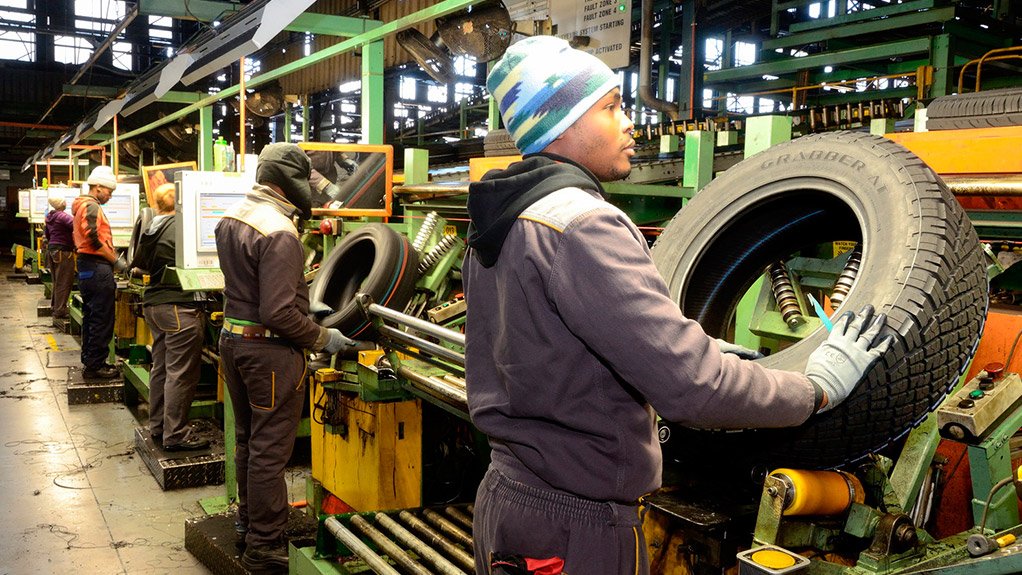Replicating the trend seen in the last three months of 2013, 60% of firms surveyed by the Manufacturing Circle (MC) in the fourth quarter of 2014 indicated that manufacturing business conditions over the period had ranged from “fragile and weak” to “poor”.
Subdued demand, sluggish construction and mining activity, a volatile rand exchange rate, regulatory hurdles and spillover effects from the third-quarter metal and engineering strike were largely blamed for the bleak conditions seen in the sector towards the end of 2014.
According to the survey, sporadic electricity supply by energy utility Eskom
was by far the most cited factor in support of a subdued tempo of activity in the sector, while some manufacturers deplored the fall in global commodity prices and its implication on mining performance.
The industry organisation noted on Monday, that there had, nonetheless, been
some improvement in sales for most surveyed firms in the fourth quarter.
BOLSTERED SALES
This was supported by factors such as normalisation following the strike in the metals and engineering sector, increased market coverage, seasonal impulses and an extensive promotional campaign.
“Nevertheless, the survey results bring to light some improvement in the share of respondents who described conditions as being either ‘modest to good’ or ‘strong’ in the fourth quarter of 2014 relative to the same quarter of the prior year,” the organisation outlined.
According to the survey, domestic sales outstripped exports, with eight out of ten surveyed firms selling more than 60% of their output locally during the quarter.
Despite reports of conditions being soft over the quarter, the bulk of surveyed manufacturers claimed to have experienced some increase in domestic and export sales.
Nearly half of survey participants stated that the volume of domestic sales had increased during the quarter.
BOOSTED EXPORTS
Looking at exports, the results of the survey showed that nearly half of the respondents reported that both the volume and value of external sales had increased during the three months to December.
“The respondents cited a number of aspects in support of positive external sales outcomes, including increased focus on the global market and a weak rand.
“On the other hand, factors that inhibited export performance in the fourth quarter included a sluggish Eurozone economy, a high level of corruption in some African countries, subdued mining activity in Africa and a weak Russian economy,” read the report.
As had been the outcome in previous surveys, Africa and Europe remained the most significant export markets for South African manufacturing firms, with about 45% of surveyed firms exporting more than 60% of their total exports to
Africa.
COST BASE
Looking to supply, an elevated input cost base was one of the key characteristics of supply conditions for most respondents in the fourth quarter.
About 70% of surveyed firms reported an increase in the total cost of production, while 80% reported an increase in imported input costs.
“While the weak rand provided support for some manufacturing exporters, many respondents said the local currency’s weakness drove up the cost of imported raw materials during the quarter,” the MC outlined.
Imported input costs accounted for up to 40% of the total cost base for 80% of respondents, while some maintained that above-inflation increases in electricity tariffs, labour costs, as well as municipal charges contributed to the escalation of the total cost of production over the quarter.
EMPLOYMENT TRENDS
Employment conditions were largely stable in the fourth quarter, with close
to half of respondents reporting no change in the number of employees.
Meanwhile, 18% of respondents claimed to have generated some jobs during the
quarter, while some indicated that weak demand for manufactured goods and high labour costs had forced them to initiate reductions in working hours, automation of production processes, rightsizing, early retirements and retrenchments.
“A number of respondents claimed that shortages in engineering, artisan and technical skills affected their operations during the quarter. Nevertheless, survey responses also reveal that some firms initiated training programmes to raise the skills [levels] among their employees,” stated the report.
FORECAST
Looking ahead, the majority of surveyed firms projected “fragile or weak” to “poor” manufacturing conditions over a 6- to 12-month horizon.
Moreover, the two-year outlook deteriorated in the fourth quarter of 2014 compared with that reported in the last three months of the prior year, with 39% expecting “fragile or weak” conditions.
“This points to a rising trend in pessimism among manufacturers. The fact that
increasingly more respondents feel that conditions [in the longer term will be] depressed does not bode well for the sector’s revival,” noted the MC.
EMAIL THIS ARTICLE SAVE THIS ARTICLE
To subscribe email subscriptions@creamermedia.co.za or click here
To advertise email advertising@creamermedia.co.za or click here











